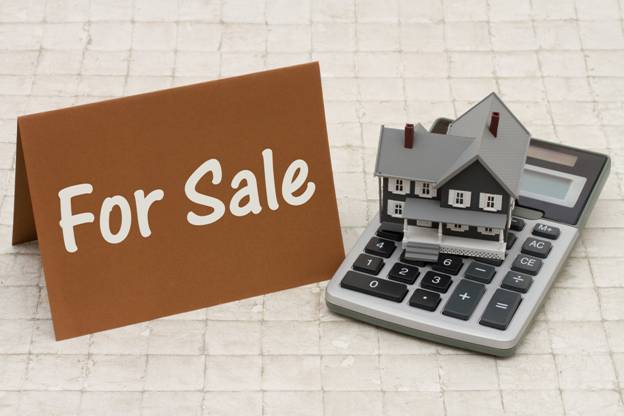Did you know that nearly half of U.S. homes have been around for at least 40 years? About 1 in 3 of all owner-occupied homes in the country are even 50 years or older!
While old doesn’t always mean dilapidated, many older houses are in poor condition. They may have foundation problems, outdated electrical and plumbing systems, mold, and rot. Their aging windows, doors, and insulation also make them less energy-efficient.
All those problems can make selling a house in poor condition challenging. However, it’s not an impossible feat with proper planning and the right strategies.
To that end, we created this guide with tips for selling an old, run-down property. So read on, as what you learn here can help you make a quick house sale.
1. Perform a Thorough Home Inspection
A home inspection lets you determine your property’s current condition and safety. It gives you insight into the parts of your home that need repairs, updates, or replacements. You can then use its findings to determine how much work (and money) to put into the house before selling it.
Home inspections are generally not mandatory for selling a home. Instead, buyers usually request and pay for them. This lets them determine if the house they want to buy is just as good inside as it is on the outside.
However, if your home’s exterior is already run-down, it may be enough to put off buyers. They may automatically assume its condition inside is as bad as the outside.
So before even looking for potential buyers, conduct a home inspection. You can DIY, but ensure you spend time looking out for the following:
- Roofing and plumbing leaks
- Mold or water damage
- Cracks, holes, and sagginess in walls and floors
- Broken or drafty windows
- Faulty electrical components
- HVAC problems, including leaky air ducts
- Signs of pest infestation, like droppings and foul smells
That’s not a complete list, so if you have the budget, hire a professional inspector instead. It can cost $200 to $500, depending on how big and old your house is, but it can save you time.
2. Check Your Budget
Once you know your home’s flaws, call contractors for estimates.
Get them from at least three similar providers (e.g., three plumbers or electricians). Doing this can give you an idea of how much you can expect to shell out for repairs, replacements, or upgrades.
Then, check your budget to see if it can accommodate your expected cost. If so, hire the contractors and schedule the jobs immediately. The sooner they finish the necessary work, the sooner you can sell your home.
3. Prioritize the Most Crucial Repairs
If you don’t have enough budget, consider prioritizing the most crucial repairs. These include problems that can compromise health and safety.
An example is a faulty electrical system, which can be a fire risk. Indeed, home electrical fires account for over 50,000 U.S. home fires yearly.
Plumbing, roofing, and gas leaks are other examples. The first two can cause unsafe mold and water damage, while the third can cause poisoning.
4. Boost Curb Appeal
Many buyers can decide whether to still look inside your home just from seeing its exterior. So how your house looks from the outside, also known as “curb appeal,” can already make or break a deal.
Cleaning your yard or lawn is one way to improve your property’s curb appeal. Remove clutter, weed, dead plants or tree branches, and other debris.
You can also fix and repaint your fence, mailbox, and front door. Clean your windows, too, as dirty ones can make your home look even worse.
5. Emphasize the Positives
Even if your home is in poor condition, it may still have positive aspects, such as being in a safe neighborhood. Essential facilities like police and fire departments, and hospitals, may also be nearby. It may also be close to the city center, saving its future residents gas and toll costs.
These are all characteristics that can make an old, run-down home appealing to buyers. If yours has these features, emphasize them in your home’s description once you list it for sale.
6. Mind the Price
Buying a new home can cost about 30% more than an old home. This means old homes are typically cheaper than new ones. So if yours is old and in poor condition too, expect its price to dip even more.
At the same time, you don’t want to settle for anything less than your home’s actual value.
So instead of guesstimating things, consider hiring a professional appraiser. They can determine your home’s market value with its flaws. They can also tell you how much it can be worth after repairs and improvements.
7. Sell Your House as Is
If you need the money ASAP, consider working with a cash buyer who can help you complete a fast house sale. Cash buyers are usually real estate investors who purchase houses in any condition.
When selling a house as is, you can choose not to make any changes to your property. If you go this route, you don’t have to worry about the cost of repairs, replacements, or updates.
Cash buyers are everywhere in the U.S. but are especially common in areas with many old or run-down homes. An example is Kansas City, MO, which has thousands of crumbling houses. Many are vacant or abandoned, while some are owner-occupied.
If your house is one of those, look for a cash buyer to sell it to. You can find them online; they often post ads saying, “We buy houses in Kansas City as is.”
Most cash buyers make same-day offers, so contact at least three for quotes. Then, consider selling to the one with the best offer, closest to your home’s appraised value. Ideally, the buyer should also pay 100% of the closing costs and has a quick closing date of 7 to 10 business days.
Follow These Tips for Selling a House in Poor Condition
As you can see, selling a house in poor condition is still possible, with or without making repairs. If you want the highest price, fix it first, prioritizing the most crucial components. If you can’t wait or need the money ASAP, consider selling it as is to a cash buyer.
If you’d like to learn more about simple home repairs, we’ve got you covered. Check out our latest home improvement articles for ideas!









